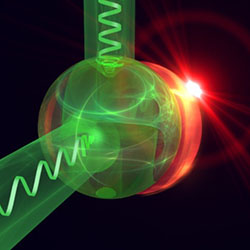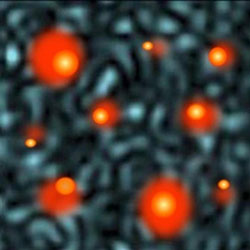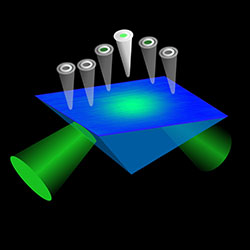 Home > Research
Home > Research
Our broad and diverse research interests are by no means limited to what is found here. Rather, this page serves as an example
of some of the recent and current topics. If you are interested in learning more, please contact
Prof. Aristide Dogariu
 Nanoscale Electrodynamics
Nanoscale Electrodynamics
Phenomena at subwavelength scales are being actively studied to advance both fundamental knowledge and experimental capabilities. Understanding the statistical properties of optical radiation at subwavelength scales is of paramount importance in the design of miniaturized devices. Based on the coherence and polarization properties at these scales, new possibilities emerge for surface and subsurface diagnostics of complex media. Manipulating the properties of electromagnetic fields at nanoscales as suggested in our studies could lead to the development of novel sensing concepts with unprecedented resolution.
 Optics of Complex Media
Optics of Complex Media
In extreme environments, electromagnetic fields couple strongly to matter. Recent advances in understanding the complex phenomenology of multiple scattering offer unique opportunities for retrieving structural information and for controlling the propagation of light. At photonic mesoscales, fascinating interaction and confinement phenomena occur across different temporal and spatial scales. For instance, an intriguing manifestation of extreme photonics at mesoscales is the emergence of active matter, a condition where the distinction between matter and radiation blurs. As opposed to passive matter, an active medium is out of thermodynamic equilibrium and displays unusual collective behaviors. Our optically-controlled active matter open avenues for creating synthetic materials that mimic properties of living matter.
 Mechanical Action of Light
Mechanical Action of Light
The idea of mechanical action of light originates in the corpuscular theory of light. Photons carry momenta and conservation laws apply whenever atoms emit or absorb photons or whenever a beam of light changes its direction due to refraction or reflection. Adjusting the properties of electromagnetic fields has direct consequences for controlling the subwavelength behavior of optical forces and torques, which leads to remarkable functionalities. For instance, being able to pull or move aside small objects with light is both counterintuitive and fascinating. Our recent research has demonstrated a number of practical possibilities for efficient manipulation of particles in a non-conservative fashion. Optically-controlled transport of matter is sought after in diverse applications in biology, colloid physics, chemistry, condensed matter and others.
 Optical Sensing
Optical Sensing
For a large class of practical situations, light interacts with material systems that are not well organized. A simple image of such optically inhomogeneous media, if left unprocessed, fails to provide any quantifiable information. The useful information is statistical in nature and can only be retrieved using concepts and procedures specific to statistical optics. The intricate characteristics of random electromagnetic fields including intensity, phase distribution, state of coherence and polarization depend on the conditions of light propagation and also on the interaction between light and complex material systems. Our research demonstrates that properties such as refractive index, structural morphology, shape, etc. can be determined based on measurable statistical properties of random electromagnetic fields.